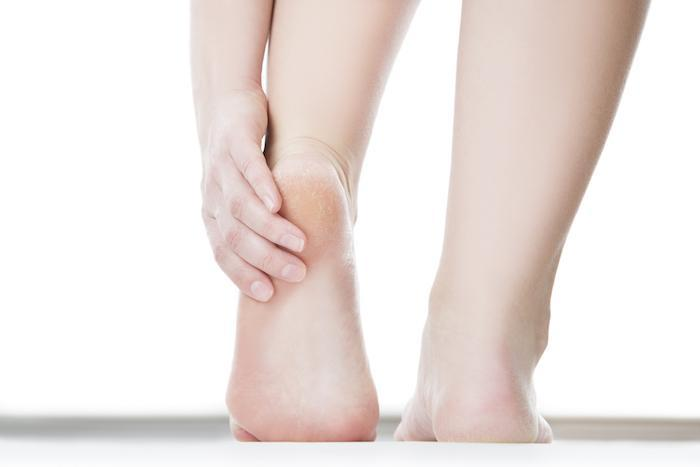Why Do I Feel Pain on the Outside of My Foot When Walking?
Why Do I Feel Pain on the Outside of My Foot When Walking?

Experiencing discomfort or pain on the outside of the foot when walking can be a frustrating and concerning issue. Understanding the potential causes of this pain is crucial for effective treatment and prevention. This blog post will explore common reasons for this type of pain, how to identify the symptoms, and what steps you can take to alleviate your discomfort.
Understanding Foot Anatomy
To better understand why you might be experiencing pain on outside of foot when walking, it’s essential to have a basic understanding of foot anatomy. The foot is made up of numerous bones, ligaments, tendons, and muscles that work together to support weight and enable movement. The outer side of the foot is comprised of the fifth metatarsal bone, the cuboid bone, and various ligaments and tendons that support the foot’s structure and function. Pain in this area can arise from various issues affecting these structures.
Common Causes of Pain on the Outside of the Foot
1. Ankle Sprains
Ankle sprains are one of the most common injuries affecting the foot and ankle. This occurs when the ligaments supporting the ankle are stretched or torn, often as a result of twisting or rolling the ankle. While ankle sprains typically cause pain in the ankle, they can also lead to pain on the outside of the foot, particularly if the injury involves the ligaments connected to the outer foot.
2. Peroneal Tendonitis
The peroneal tendons run along the outside of the ankle and foot. Overuse or injury to these tendons can lead to peroneal tendonitis, characterized by pain and swelling along the outer foot and ankle. This condition can result from repetitive activities, improper footwear, or previous injuries that may have compromised the tendons’ strength.
3. Cuboid Syndrome
Cuboid syndrome occurs when the cuboid bone, located on the outer side of the foot, becomes misaligned. This can lead to pain on the outside of the foot, often accompanied by a feeling of instability. Athletes or individuals who engage in activities that involve sudden changes in direction may be more susceptible to this condition.
4. Stress Fractures
Stress fractures are small cracks in a bone that result from repetitive stress or overuse. The fifth metatarsal bone is particularly vulnerable to stress fractures, especially in individuals who engage in high-impact sports or activities. Pain from a stress fracture often intensifies with activity and may cause swelling and tenderness on the outside of the foot.
5. Bursitis
Bursitis refers to the inflammation of the bursae, small fluid-filled sacs that cushion the joints. Bursitis can occur in the foot, leading to pain on the outside of the foot and making walking uncomfortable. Factors contributing to bursitis can include repetitive movements, improper footwear, and pre-existing foot conditions.
6. Tendon Injuries
Tendon injuries, such as tendinitis, can affect the tendons on the outer side of the foot and ankle, leading to pain and discomfort. Overuse, improper footwear, and lack of flexibility can contribute to these injuries. Identifying tendon injuries early on is essential to prevent further damage.
Identifying Symptoms
Recognizing the symptoms accompanying pain on the outside of your foot is crucial for proper diagnosis and treatment. Common symptoms may include:
- Swelling or inflammation on the outer side of the foot
- Bruising or discoloration
- Tenderness when touching the affected area
- Difficulty walking or putting weight on the foot
- Pain that worsens with activity or prolonged standing
If you experience these symptoms, it’s advisable to consult a healthcare professional for an accurate diagnosis and appropriate treatment.
Treatment Options
1. Rest and Ice
Resting the affected foot is crucial to allow any injuries or inflammation to heal. Applying ice to the painful area can help reduce swelling and numb discomfort. Aim to ice the area for 15-20 minutes every couple of hours, especially during the first few days following the onset of pain.
2. Compression and Elevation
Using compression bandages can help manage swelling and provide support to the injured area. Additionally, elevating the foot while resting can further reduce swelling by promoting better blood flow.
3. Physical Therapy
If pain persists, physical therapy may be beneficial. A qualified therapist can design a rehabilitation program tailored to your specific needs, focusing on strengthening exercises, flexibility training, and techniques to improve your gait.
4. Medication
Over-the-counter pain relievers, such as ibuprofen or acetaminophen, can help manage pain and reduce inflammation. Always consult a healthcare professional before taking any medication to ensure it is appropriate for your specific condition.
5. Footwear Adjustments
Wearing proper footwear can significantly impact foot health. Opt for shoes that provide adequate support and cushioning, particularly if you engage in activities that put stress on your feet. Consider consulting with a podiatrist for recommendations on footwear that best suits your needs.
6. Orthotics
Custom orthotic inserts can provide additional support and cushioning to alleviate pain on the outside of the foot. These inserts are designed to improve foot alignment and distribute pressure evenly across the foot, helping to prevent further injuries.
When to Seek Professional Help
While many cases of pain on the outside of the foot can be managed at home, certain situations warrant professional medical attention. Seek help if:
- You experience severe pain that doesn’t improve with rest and home treatment.
- You notice significant swelling or bruising.
- You have difficulty walking or bearing weight on the affected foot.
- Symptoms persist for more than a few days.
Conclusion
In conclusion, experiencing pain on the outside of your foot when walking can stem from various causes, ranging from ankle sprains to tendon injuries. Understanding the underlying reasons for your pain is the first step towards effective treatment and recovery. If you’re dealing with persistent discomfort, it’s essential to consult a healthcare professional for a proper diagnosis and tailored treatment plan. If you’re in need of specialized care, consider seeking ankle sprain treatment in Scottsdale, AZ. Remember, addressing foot pain early can prevent further complications and help you return to your daily activities with confidence.




